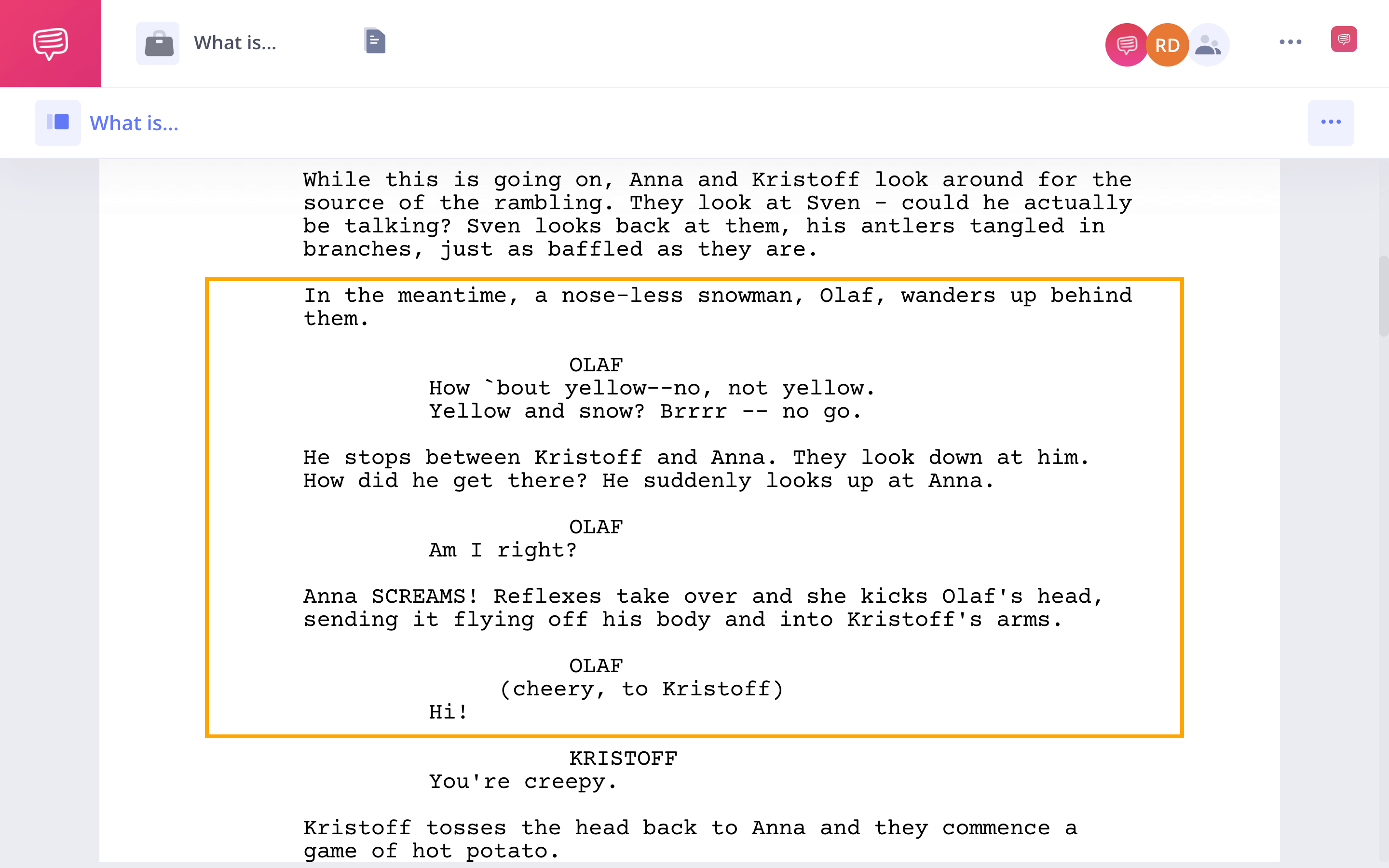

W hen looking at some of cinema and literature’s most iconic characters, it’s easy to find ones that are non-human. Animals, androids, and other non-human characters, however, have somehow won our hearts over in countless tales. This is largely due to the fact that these non-human characters are given human traits, otherwise known as anthropomorphism. What is anthropomorphism used for? Let’s define anthropomorphism and its function in the world of storytelling.
Anthropomorphism can be a mouthful to say. Let’s start by breaking down the different parts of the word. Then, we'll identify the anthropomorphism definition to better understand it.
Anthropomorphism is the attribution of human traits and characteristics to non-human subjects. These human traits are often things like emotion, behavior, and communication. The term derives from the Greek "ánthrōpos" meaning “human” and morphē or “form.” Anthropomorphism is often studied in psychology such as when humans anthropomorphize their pets. It is also a valuable literary device that is used in both cinema and literature.
Now that we have a basic understanding of the definition, let's look at some examples of this technique.
Anthropomorphism can be found in all types of writing as a way to liven up and further engage the audience. Let’s take a look at an example.
In Frozen, anthropomorphism is used to bring a snowman named Olaf to life. Without this literary device, Olaf would not be as amusing and entertaining in this fantastical film.
We brought the Frozen screenplay into the StudioBinder screenwriting app to break down this example. Notice how Olaf's dialogue is just as natural and charismatic as any of the human characters.

Another example can be found in the novel The Lion, the Witch and the Wardrobe by C.S. Lewis. When describing Aslan, Lewis anthropomorphizes the animal of a lion to be a king.
"Is-is he a man?" asked Lucy.
"Aslan a man!" said Mr Beaver sternly. "Certainly not. I tell you he is the King of the wood and the son of the great Emperor-beyond-the-Sea. Don't you know who is the King of Beasts? Aslan is a lion - the Lion, the great Lion."
"Ooh!" said Susan, "I'd thought he was a man. Is he - quite safe? I shall feel rather nervous about meeting a lion."
"That you will, dearie, and no mistake," said Mrs Beaver; "if there's anyone who can appear before Aslan without their knees knocking, they're either braver than most or else just silly."
"Then he isn't safe?" said Lucy.
"Safe?" said Mr Beaver; "don't you hear what Mrs Beaver tells you? Who said anything about safe? 'Course he isn't safe. But he's good. He's the King, I tell you."
The use of Aslan as a lion is symbolic because they are considered to be one of the kings of the wild.
Additionally, it is also a way to give prestige and strength to the character.
When we use anthropomorphism in a sentence, there is often confusion if we're actually talking about personification. However, these techniques have their own unique definition and application.
Personification is a literary device that gives human characteristics to nonhuman things or inanimate objects. This applies to animals, objects, or even a concept. Like anthropomorphism, personification can add life and energy to otherwise lifeless objects or subjects.
Here's a video that breaks down this difference.